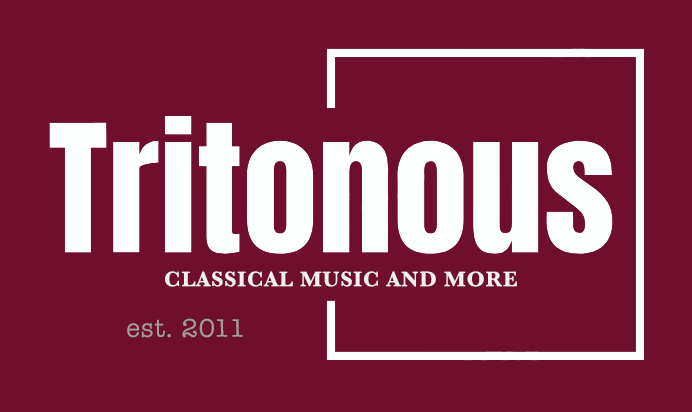
Messiaen Vingt régards de l’enfant Jésus (1944) Nicolas Hodges (piano). Wigmore Hall, 31.05.2024
The last time I heard Messiaen’s vast Jesus-oriented canvas was at Milton Court in 2016 (review), Pierre-Laurent Aimard was the pianist, a performance of real majesty; now Nicolas Hodges enters the fray, offering a reading of astonishing breadth and wamth. Like Aimard, Hodges is steeped in the music of today and of the last century (his performances of Rebecca Saunders’ Piano Concerto in both Berlin and London were exceptional – click here for the London review).
Messiaen’s masterpiece was written in 1944, during the final months of the Nazi occupation of Paris. While the composer later attested to the influence of Liszt, Chopin, Albéniz, the piece speaks of pure Messian and of a pure expression of his faith.
The interpretative challenge is to sustain the flow and stricture of this piece over wo hours and ten minutes, without an interval. It was testament to Hodges’ ability to create an atmosphere of the utmost concentration taha audience noise was at a minimum throughout – the ear could concentrate on the multi-coloured sonorities emanating from the piano. The amount of thought that went into every gesture was evident throughout, right from the perfectly placed chords of the opening ‘Régard du père’ (the ‘Theme of God’). Messiaen’s chords are luminous, and so was Hodges’ playing; chords that are placed low down registrally still had every element audible.
An important component of Hodges’ success was that he can present Messiaen’s music full force without losing full one – the explosions é ‘Regard de l’Étoile’ were emotionally vibrant but there was no timbral forcing. Another component of Messiaen’s writing is that he can write in superimposed layers, something evident in ‘L’echange,’ and beautifully elucidated by Hodges (we heard it again, in the most delicate of terms, in ‘Régard du Fils sur le Fils,’ where ongoing resonance of chords gained huge emotional power). Gesture is another element, but in Hodges’ case gesture was never just that – it was always part of a greater whole.
Unapologetically stating Messiaen’s case is vital: there can be no softening of the more violent moments. This was particularly effective in ‘Régard de la Vierge’; Hodges refused to indulge in the toe-curling beauty of the opening, delicate chord sequence, instead instilling a certain objectivity hat contrasted with sudden outbursts. The frenzied ’Pour Lui tout a été fait’ was, in Hodges’ hands, a virtuoso cosmic dance, full of energy and phenomenal contrasts: here, Messiaen after a time uses sustained notes sounding against a high-pitched angular dance, to brilliant effect. If in their recordings Aimard and Chamayou offer a purely Messiaen account, Hodges seemed to bring more than a touch of Liszt to this experience.
Pinpoining the contours of the entire piece overall is key; so it was that ’Régard de la Croix’ offered some rest, but underlying its opening moments was an undeniable tension that had to out – and did so via the power of some tremendous bass octaves. The ‘Régard des Hauteurs’ seems to shift its glance towards the French impressionists before whizzing off into unpredictable stellar flight.
Known for his exciting way with rhythm (whether in Turangalîla or, perhaps Cantéyodjayâ), Messiaen is equally capable of creating the illusion of exiting time itself; Hédges co-created this illusion perfectly in ’Regard du Temps,’ then took the idea on a walk with the ‘Régard de l’esprit du joie’ (where ecstatic passages – crazily so, sometimes, veering towards Nancarrow – vie with moments of ethereal beauty. Hodges’ performance of the later ‘Régard du silence’ was touched with greatness in its tendresse.
This was a performance, not of extremes, but one that embraced extremes. The fearsome power of the opening of ‘Régard des prophères, des bergers et des Mages’ and its almost maddening single-line repetitions that followed seemed the perfect juxtaposiion. The final two movements, ‘Je dors, mais mon cœur veille’ and ‘Régard de l’Église d’mour’ seemed to contain the entire piece in microcosm, from inward contemplation to external celebration garlanded with the pianos’ invocation of bells, gong strokes, and sheer ecstasy.
A memorable evening.
I mentioned Aimard and Chamayou above. Both are impressive – I never thought I would have thought it, but I show a preference for Chamayou in what is surely the ideal recording of this magnificent cycle.
Don’t forget we explored other performances by Nicolas Hodges on Classical Explorer; click here for his Wergo album, a bag of bagatelles, and click here for a report on the UK premiere of Rebecca Saunders’ piano concerto, to an utterance.
Chamayou’s Erato recording is available from Amazon here; Aimard’s, here.
.




%20Sasha%20Gusov.JPG.jpg?w=160&resize=160,160&ssl=1)

